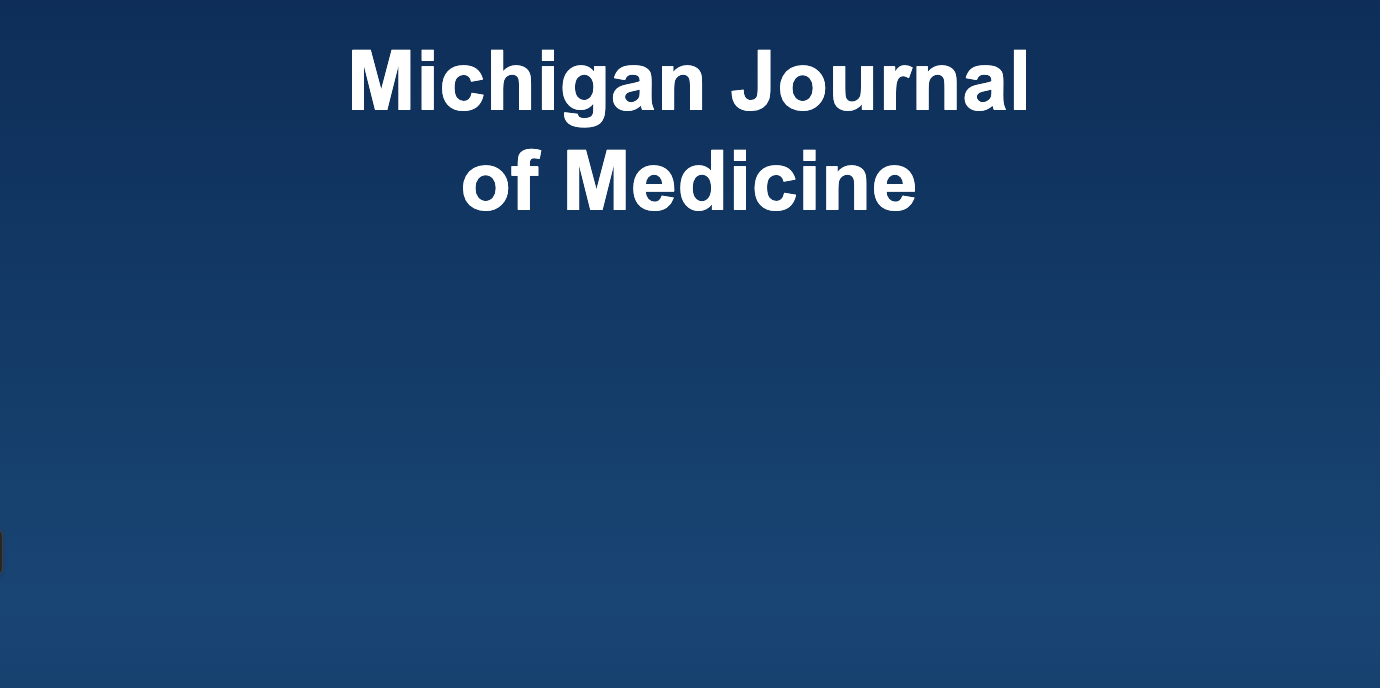Introduction
Pancreatectomies are among the most morbid operations performed in Michigan, with significant variation in outcomes status post pancreatectomy. Reliability-adjusted complication rates range from 29–42%, while readmission rates range from 11–24%, reoperation rates from 3–11%, and hospital stays can vary from 9–14 days across 28 hospitals in the state of Michigan. While previous work demonstrated superior outcomes in pancreatic resections performed at high-volume centers,1 patient preference and growing expertise in complex surgery drive an increasing number of cases to be performed at community hospitals.
The Michigan Surgical Quality Collaborative (MSQC) aims to improve care at all participating institutions to meet the needs of Michigan residents through the adoption of a collaborative care pathway. While it is uncertain whether travel distance plays a major role in hospital selection for high-risk surgical cases, it nevertheless remains a factor in choosing a location for surgery. In turn, this makes frequent referrals to large cancer centers for care an untenable proposition for many members of our statewide surgeon community.2 Improving and standardizing care for operations like a pancreatectomy will have a positive spill-over impact on many systems of care within community hospitals. To optimize systems of care at all hospitals and among all surgeons in Michigan who perform pancreatectomies, our proposed strategy involves the development and implementation of a statewide pancreatectomy care pathway informed by quality evidence and high-performing surgeons.
Clinical care pathways are standardized tools for routine operations that improve patient outcomes after surgery. Led by high-performing sites and the best evidence, teams of surgeons from across the state come together to draft a statewide care pathway. Existing pathways include colectomy, lap cholecystectomy, hernia repair, and hysterectomies. Once complete, surgeons return to their institution to discuss the pathway in detail with partners and colleagues. All sites have the option to edit the pathway to fit their institution’s unique needs, but within a single site, there should be a single common pathway for care.
Pancreatectomy Clinical Care Pathway Development
In an effort to design a pancreatectomy pathway that would be broadly implemented at all MSQC hospitals, we solicited current pathways or guidelines in use at peer institutions. Recommendations organized by phase (pre-, peri- and postoperative) were assembled into a document for presentation. Participating hospitals sent surgeon representatives to review and edit the document until a consensus pathway was finalized. The pathway was sent for approval to the executive committee of the MSQC. After approval, each surgeon representative presented the pathway to their respective institution. Institution-specific additions or changes (e.g. surgical technique) that do not fundamentally alter the MSQC-approved pathway may be made at that time.
Components of the pancreatectomy pathway
Our pancreatectomy pathway is categorized by phase: preoperative, immediate preoperative, intraoperative, postoperative, and post-discharge (Figure 1). In the preoperative phase, special consideration is given to patient education, imaging considerations, prehabilitation, and tumor board discussion. Multimodal analgesia to reduce opioid use, infection prevention measures, and venous thromboembolism (VTE) prophylaxis are the intraoperative focus. Components of the postoperative phase include initiating proton pump inhibitor therapy, early foley removal, early alimentation, and discontinuation of IV antibiotics. Operative report standards were set to include pancreatic duct size, texture, vascular reconstruction, presence of a stent, and the type of neoadjuvant treatment utilized. Ultimately, patients meet discharge criteria if they are tolerating a diet without nausea and pain is well-controlled with oral medications. Post-discharge, patients are contacted within two business days and have a clinic visit within 2–6 weeks.
Potential benefits of a statewide pancreatectomy care pathway
Hospital Length of Stay & Reduced Spending
Hospital length of stay (HLOS) varies greatly between MSQC hospitals, and literature within NSQIP supports this finding.3 Research performed at the single institution level suggests that the implementation of a care pathway lowers HLOS, particularly for institutions that already have higher HLOS at baseline.1,4,5 Given this variability within HLOS, we expect HLOS to decrease most in outlier institutions, lowering variability and ensuring standardized quality care across participating MSQC institutions. In parallel, the implementation of a care pathway may reduce total hospital spending.5 One institution found that a decrease in HLOS was associated with a significant decrease in inpatient spending.4 With accelerating healthcare costs noted across the country,6 any decrease in spending is welcome.
Low burden of implementation
In conjunction with reduced spending, the implementation of a care pathway is enticing because it is resource-friendly and easily implemented across institutions. Few resource requirements are needed in order to translate a pathway into practice. Kennedy et al. showed that they were able to implement an outside institution’s pancreatectomy pathway without substantial resources.7 Overall, a pancreatectomy care pathway would be cost-effective, and it would ensure quality care with minimal requirements from staff or hospitals, thereby allowing a variety of institutions to adopt this pathway with ease.
Complications, Morbidity, and Mortality
Studies have demonstrated that another benefit of implementing an organized care pathway at the individual institution level is that it improves quality indicators such as glycemic control, incentive spirometer usage, and time to recovery and discharge with fewer postoperative complications.4 Single institution studies have not found morbidity or mortality improvements pre- versus post-pancreatectomy pathway implementation. However, this has not been studied on a multi-institutional level, which in turn limits the ability to assess care pathway quality markers such as morbidity and mortality.4
Barriers to Clinical Care Pathway Implementation
Despite an overall positive perception of clinical care pathways, barriers to their implementation exist at the cultural, educational, and patient levels.8 In a single institution qualitative study, a commonly cited barrier to implementation was the dichotomy between the new pathway and current provider practice patterns. Provider experience and familiarity with particular clinical practices represent a cultural barrier to implementation. Additionally, poor awareness of the pathway and frequent provider turnover limits adherence to pathways at the educational level. Finally, each patient’s unique clinical presentation and individual hospital course can impact one’s ability to adhere to clinical care pathways.
Conclusion
In spite of the barriers that challenge the uptake of clinical care pathways, implementation of a statewide pancreatectomy care pathway will improve standardization of care for such procedures. As complex procedures like pancreatectomies continue to branch out into surrounding community hospitals, surgeons across the state are eager to collaborate to improve the quality of care by working together to make a standard pathway. Our care pathway, unique in its reach across the state of Michigan, exemplifies an evidenced-based and practical treatment plan supported by evidence and high-performing expertise in perioperative pancreatectomy care.
In the future, within our collaborative, we plan to analyze complication rates and better understand how morbidity and mortality are impacted across MSQC institutions after this standardized pancreatectomy care pathway is implemented. Guided by these data, surgeon leaders will engage in an iterative process following a continuous quality improvement framework to optimize complex surgical care for patients across the state of Michigan.
Acknowledgements
This work was supported by the National Institutes of Health T32 Ruth L. Kirschstein National Research Service Award as well as Blue Cross and Blue Shield of the Michigan value partnership program.
Conflicts of interest
Michael Englesbe receives salary support from Blue Cross and Blue Shield of Michigan.
References
1. La Torre M, Nigri G, Ferrari L, Cosenza G, Ravaioli M, Ramacciato G. Hospital volume, margin status, and long-term survival after pancreaticoduodenectomy for pancreatic adenocarcinoma. The American Journal of Surgery. 2012; 78(2).
2. Yahanda AT, Lafaro KJ, Spolverato G, Pawlik TM. A Systematic Review of the Factors that Patients Use to Choose their Surgeon. World J Surg. 2016; 40(1):45–55.
3. Nussbaum DP, Penne K, Speicher PJ, Stinnett SS, Perez A, White RR, et al. The role of clinical care pathways: an experience with distal pancreatectomy. Journal of Surgical Research. 2014; 190(1).
4. Denbo JW, Bruno M, Dewhurst W, Kim M, Tzeng C-W, Aloia T, et al. Risk-stratified clinical pathways decrease the duration of hospitalization and costs of perioperative care after pancreatectomy. Surgery. 2018; 164(3).
5. Joliat G, Labgaa I, Petermann D, Hubner M, Griesser A, Demartines N, et al. Cost-benefit analysis of an enhanced recovery protocol for pancreaticoduodenectomy. British Journal of Surgery. 2015; 102(13).
6. CMS.gov. Historical. https://www.cms.gov/research-statistics-data-and-systems/statistics-trends-and-reports/nationalhealthexpenddata/nationalhealthaccountshistorical. Accessed 29 Dec. 2022.
7. Kennedy EP, Rosato EL, Sauter PK, Rosenberg LM, Doria C, Marino IR, et al. Initiation of a critical pathway for pancreaticoduodenectomy at an academic institution—the first step in multidisciplinary team building. Journal of the American College of Surgeons. 2007; 204(5).
8. Madsen HJ, Lambert-Kerzner A, Mucharsky E, et al. Barriers and Facilitators in Implementation of an Esophagectomy Care Pathway: a Qualitative Analysis. J Gastrointest Surg. 2022.
9. Whipple Care Pathway Michigan Surgical Quality Collaborative. MSQC Quality Improvement. https://msqc.org/quality-improvement/msqc-care-pathways/.


